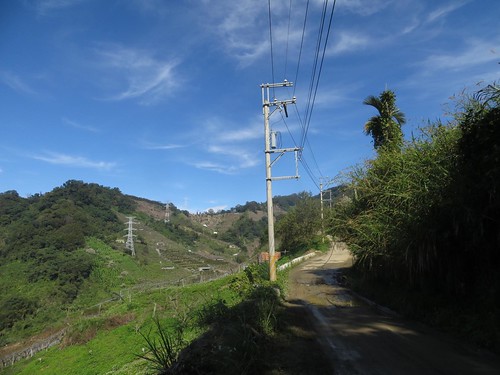From Eels and Humans, Tsukamoto and Kuroki (Eds.)
Freshwater eels (Anguilla spp.) are an important food resource and support large-scale aquaculture in some oriental countries. Taiwan’s climate is ideal for eel stocks living in the wild and for aquaculture. Indeed, the country’s aquaculture industry, which was initiated in the 1960s and peaked in the early 1990s, contributed greatly to Taiwan’s economic development at the time, though much of that production has since been transferred to mainland China. Despite their economic importance to humans, however, many people are not that familiar with eels, so this chapter supplements material presented elsewhere in this book by documenting aspects of eel distribution and biology, mythology, cuisine, etc, in Taiwan.
....
The recent decline in the population of wild Japanese eels has resulted in there being an insufficient supply of glass eels for aquaculture in Taiwan and elsewhere. The reason for the decline is not absolutely clear, but as speculated elsewhere in this book and for other species of eel too, it may be related inter alia to overfi shing, habitat degradation and/or global climate change (see below). Whatever the cause of the decline, though, and in an attempt to stimulate recovery of Japanese eels in the wild and concomitantly to increase glass eel production for aquaculture, the Taiwanese government ordered the release of hormone-induced mature eels (silver eels) into the open ocean from 1976 to 2002. Since the millennium, however, that programme has shifted its focus to releasing young eels into rivers.
In addition to the five species of eel found naturally in Taiwan, some exotic species of anguillid eel have also been found in the wild. Succinctly, faced with a reducing inflow of Japanese glass eels and a heavy demand for glass eels generally for aquaculture in the country, glass eels of non-endemic species such as the American eel A. rostrata were introduced from North America; some escaped from the aquaculture ponds into the wild and have since been caught occasionally during their spawning migration as adults (Han et al. 2002; Tzeng et al. 2009). Additionally, the Australian speckled longfin eel A. reinhardtii has been caught in Sun-Moon Lake in central Taiwan, having originally been imported from Australia for cuisine purposes because of its similarity to the A. marmorata eaten preferentially by Taiwanese (Chang et al. 2008).
....
Long-term catch data (1972–2011) have indicated a significant decadal change in peak catches of Japanese glass eels coinciding with solar activity reflected in an 11.2 year periodic change in sunspot number (Fig. 9.3a; Tzeng et al. 2012a). The catch of glass eels seems to increase with a concomitant increase in the number of sunspots, and although the cause−effect relationship between glass eel numbers and sunspots is not a direct one, the climate change index WPO (Western Pacific Oscillation) that influences the two currents (NEC and Kuroshio) that transport eel larvae from the spawning grounds to the coasts and subsequently affects the Taiwanese glass eel catch is clearly a link (Tzeng et al. 2012a). After peaking in 1979, the Taiwanese glass eel catch gradually declined to a lower peak in 2001, since when it declined further until the most recent lower peak in 2011, mirroring similar decreases in the population size of the Japanese, American and European eels (Fig. 9.3b ). All this is taken as evidence that fluctuations in the catches of glass eels in Taiwan refl ect not only the overall population size of A. japonica but also ocean–atmosphere interactions exemplified by the climate change indices of sunspots and WPO.
...
The eel is an important religious icon in Taiwanese folklore. The Japanese eel and the giant mottled eel are regarded, respectively, as river and sea gods, and this can be seen in the design and paintings of gate god statues commonly placed at the entrance to traditional Taiwanese village dwellings. Many villagers believe that the gate gods protect them against the devil and evil spirits, and protect the security of their family (Fig. 9.13a ). Additionally, eels appear in the design of “ong-bao” (Fig. 9.13b ), the red bags containing money that parents give children to seek good fortune during the Chinese Lunar New Year. Eels are important also for Taiwanese native (aboriginal) peoples, but those people do not kill and eat the eels because they believe that they are the embodiment of celestial beings.
_____________
Daily Links
- The Curious Case of Taiwan's Ties to PNG
- Dan Blumenthal recommends how the US should unwind Taiwan's Cold War Legacy
- New Bloom: can Hung save the KMT? Probably not.
- Decapitation crime: Killer held "incommunicado" but Apple Daily reported that he was beaten in his cell. A longtime observer noted that of course the police knew which cell he was going into. The White Rose Movement, a women's organization dedicated to tough on crime stances, promised to agitate for an end to calls for abolishing the death penalty.
[Taiwan] Don't miss the comments below! And check out my blog and its sidebars for events, links to previous posts and picture posts, and scores of links to other Taiwan blogs and forums!

3 comments:
aquaculture - How many of you know that Sturgeon are raised in large fresh water tanks near KuKuan Hot Spring. Kukuan was on the road between Taichung and Lishan. This road is now closed just past KuKuan for a number of years do to landslides. I believe it will never be open again for the general public.
Actually, that section of provincial highway eight is open to the public, but only at certain times and only to cars and vans (not motorcycles and scooters).
It's only open to people with a registered domicile in Lishan, and only at certain times, and not in bad weather or when typhoon warnings are in effect.
Post a Comment